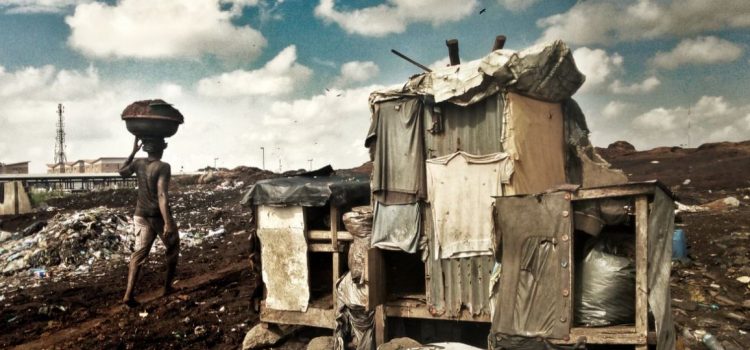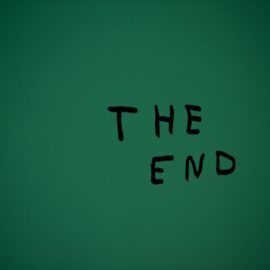

This article is an excerpt from the Shortform book guide to "The Bottom Billion" by Paul Collier. Shortform has the world's best summaries and analyses of books you should be reading.
Like this article? Sign up for a free trial here .
What’s The Bottom Billion by Paul Collier about? Why does Collier believe that his messages in this book are urgent and time-sensitive?
The Bottom Billion is Paul Collier’s book about the world’s poorest nations and how they’re stuck in “poverty traps” that prevent them from growing. Collier says that, the longer the West takes to help these countries, the harder it will be for them to overcome their struggles.
Here’s a brief overview of the book.
Book Overview
About one billion people around the globe live in persistent poverty—in countries where the economy is constantly struggling and incomes are stagnant or shrinking. In The Bottom Billion, Paul Collier, a British economist, argues that traditional economic theories and development aid programs have paid too little attention to these countries, instead focusing on emerging markets that don’t require help from the West to grow.
Collier, who has devoted his career to the study of underdeveloped economies, says only a select group of the poorest nations need outside help, because they are stuck in “poverty traps” that make economic growth especially hard. This group—which Collier refers to as the bottom billion—needs to be the focus of development efforts. They are stuck, and will stay stuck, unless we help them. By we, Collier means governments, aid agencies, international organizations, and private charities, which must work together to craft policies to help the poorest overcome these traps.
(Shortform note: Collier identifies 58 nations that fall into the category of “the bottom billion.” To avoid “naming and shaming,” he doesn’t provide a comprehensive list. However, he does refer to this group as “Africa+” because most of the countries that make up the bottom billion are in sub-Saharan Africa. Nations like Haiti, Afghanistan, and Yemen also fit into this category.)
Collier stresses that speed is paramount. The longer we wait to help, the harder it will become for the poorest nations to overcome their poverty traps. This is because as the bottom billion stagnates, everyone else continues to grow. This causes an ever greater divergence between the two groups and puts the poor nations at a competitive disadvantage in a globalized economy.
Collier argues that this divergence is already happening. Taken together, middle-income emerging countries (like China and India, for example) grew by an average of:
- 2.5% a year during the 1970s
- 4% a year during the 1980s-1990s
- 4.5% a year during the early 2000s
On the other hand, the poorest nations’ incomes:
- Rose by 0.5% a year in the 1970s
- Declined by 0.4% a year in the 1980s
- Declined by 0.5% a year in the 1990s
Therefore, this group of already poor nations was poorer in 2000 than it was in 1970.
Collier’s reason for helping the bottom billion is simple: 200 years after the Industrial Revolution, the West is developed, and it now has the ability to speed up the process for everyone else. Collier argues that doing so can lift millions of people out of poverty, and it can insure the West against spillover effects of the violence, disease, and dysfunction that poverty often causes.
| Who Is Paul Collier? Sir Paul Collier has spent his academic career focused on economic development, with a specialty in the study of civil war, foreign aid, and democracy in Africa. From 1998 to 2003, he was director of the World Bank’s Development Research department. In 2003, he and his colleagues published a World Bank report called Breaking the Conflict Trap, a 242-page report analyzing the causes and consequences of civil war. This report is the basis of many of Collier’s arguments in The Bottom Billion. Currently, Collier is a professor of economics at St. Antony’s College and director of the Centre of African Economies at Oxford. In 2014, Collier received a knighthood for his contributions to understanding and promoting positive change in Africa. |
| How Has GDP Growth Changed for the Poor in the 21st Century? Evidence suggests that the conditions of the bottom billion have taken a turn for the better since The Bottom Billion was published in 2007. Although Collier doesn’t name the 58 nations that comprise his “bottom billion,” the United Nations has a similar category: Least Developed Countries (LDCs). As of 2020, there were 47 LDCs, with a combined population of 1.06 billion people, slightly above the 980 million people among Collier’s group of 58 nations in 2007. From 2000 to 2020, the LDCs had an average annual GDP per capita growth rate of 2.5%. This was significantly higher than the growth rates Collier calculated for the bottom billion from 1980-2000, which hovered around negative 0.5%. In 2000, these nations had GDP per capita of $331. As of 2020, it had grown to $1,054. In contrast, the middle-income countries had an average annual GDP per capita growth rate of just below 4.2% from 2000 to 2020. So, middle-income countries are still growing faster than the bottom billion. However, incomes among the LDCs have shifted from shrinking in 1970-2000 to increasing modestly since 2000. Many scholars attribute the 21st-century successes to the Millennium Development Goals. |
Four Kinds of Poverty Traps
Collier identifies four distinct “traps” that afflict the bottom billion, locking them into poverty with little chance of escaping on their own: the conflict trap, the natural resource trap, being landlocked, and poor governance
(Shortform note: Collier borrows the term “poverty trap” from fellow development economist Jeffrey Sachs, who initially used the term while referring to the “trap” of endemic diseases like malaria.)
Collier says all nations of the bottom billion suffer from at least one of these traps, while many deal with a combination of the four. Seventy percent of those suffering from these traps are in Africa, which is why Collier urges the West to place its focus there.
Collier thinks it’s a mistake to focus on emerging, middle-income economies like China and India. Unlike countries in the bottom billion, both of these nations have achieved sustained growth and aren’t stuck in an economic rut. When aid agencies like the World Bank and International Monetary Fund (IMF) take a more expansive view of the global poor, Collier says this only diverts resources from the poorest nations that need it most.
| Reaction to Collier’s Work When The Bottom Billion was published in 2007, it was regarded by many to be a middle ground between two earlier books from prominent development economists: Jeffrey Sachs’ The End of Poverty, which testified to the virtues of foreign aid, and William Easterly’s The White Man’s Burden, which was deeply critical of the efficacy of aid and the institutions that distribute it. The Economist said The Bottom Billion was filled with “statistical nuggets and common sense” and was due to become a classic. A review in The Guardian praised it for getting past the slogans and cliches that dominate most discussions of global poverty. Collier was also praised for his brevity and humor in conveying the dense material on which his findings are based. One of the most vocal critics of The Bottom Billion was William Easterly, who, in a lengthy op-ed, accused Collier of the “correlation-as-causation” fallacy because his analysis of conflict failed to test a well-specified hypothesis. Easterly also argued that because all rich nations were poor at one time, this doesn’t mean that the 58 nations Collier chose will stay poor unless the West intervenes. Collier acknowledges that Western nations grew on their own, but he believes the West can and must expedite the process for the current poor. |

———End of Preview———
Like what you just read? Read the rest of the world's best book summary and analysis of Paul Collier's "The Bottom Billion" at Shortform .
Here's what you'll find in our full The Bottom Billion summary :
- How development aid programs pay too little attention to struggling countries
- A look at the four poverty traps, and the four remedies for them
- How conditions for the bottom billion are changing






Paul Collier shows facts evidencing that either his own assessment is wrong or he committed the very same mistakes he criticized.
He supported British companies that ended up joining forces with Chinese companies to plunder natural resources in under-developed countries, supported by politicians he considered engaged with democratic values even when they had won in rigged elections.
He is just echoing what the World Bank and other institutions committed to implement debt traps suggest LDC to do. Thus, his job as adviser is well recompensated and his reputation is protected in spite of the lack of tangible results.